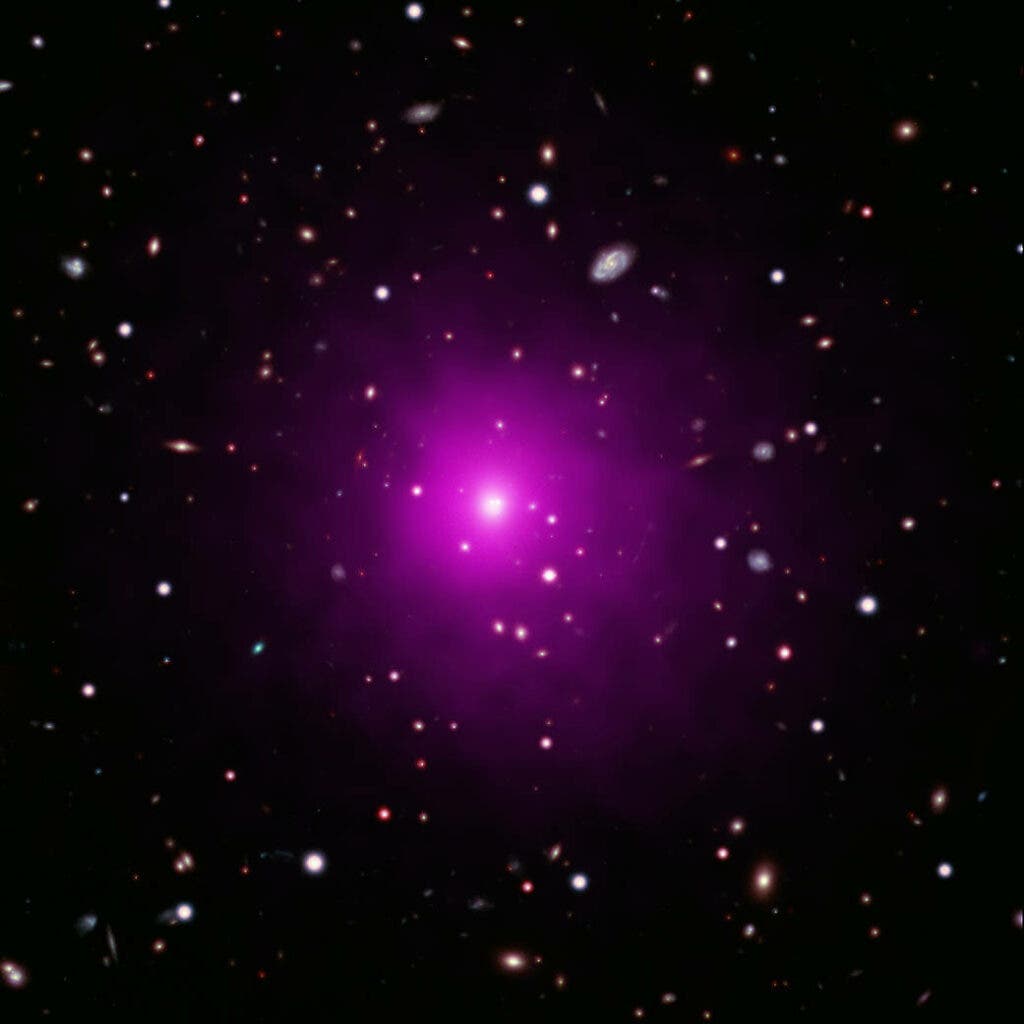
Astronomers surveying the heart of the giant galaxy cluster Abell 2261 were expecting to find a hefty supermassive black hole, with an appetite for matter and energy that matched the enormous scale of its cosmic home. But although the supermassive black hole should have had a mass between 3 to 100 billion times that of the sun — very conspicuous to most observations — there was no object to be found. NASA scientists don’t know what to make of the missing black hole and its elusive nature may be yet another reminder that we still know very little about these mysterious objects.
Just like stars cluster around the core of a galaxy, so do galaxies group together, bound by the gravity of an extremely dense core. Most known galaxies, including the Milky Way, have a supermassive black hole at their core that keeps their stars together. Similarly, clusters of hundreds or thousands of galaxies have a core, with an even larger supermassive black hole bounding all those galaxies in place. The galaxy nearest this core is known as the brightest cluster galaxy (BCG) — this is where the cluster’s most important supermassive black hole should be found.
Abell 2261’s BCG is a staggering one million light-years across, making it about 10 times larger than the Milky Way. What’s more, it has a huge core 10,000 light-years across, the largest galactic core ever found.
But, defying all expectations, a team of astronomers led by Kayhan Gultekin from the University of Michigan couldn’t find any supermassive black hole in the galaxy in the middle of Abell 2261, located about 2.7 billion light-years from Earth.

The astronomers employed the most sophisticated techniques and searched the sky using NASA’s Chandra X-Ray Observatory and the Hubble Space Telescope, however they were quite surprised when they came out empty-handed. After all, an object that could weigh as much as 100 billion times the mass of the sun shouldn’t be able to hide easily. For comparison, the Milky Way’s supermassive black hole has 4 million solar masses.
As a black hole devours matter, some of the material becomes superheated at it falls towards the black hole, producing X-rays in the process. However, the scientists did not detect any such source. This is the second time that researchers have failed to find the supermassive black hole at the center of Abell 2261’s large central galaxy, after previous attempts that employed Chandra data obtained in 1999 and 2004. So perhaps there really isn’t any black hole — at least not where scientists have been expecting.
It’s possible the black hole was ejected from the host galaxy’s center as a result of two galaxies merging to form the observed one. When two black holes merge, they produce gravitational waves that may be stronger in one direction than another, so the newly formed supermassive black hole might have been ejected from the center of the galaxy in the opposite direction. Scientists call this a recoiling black hole.
But that’s all in theory. We don’t have any evidence that supermassive black holes can merge, let alone evidence of a black hole recoiling. To date, researchers have only confirmed the mergers of much smaller black holes.
Alternatively, the black hole may not be active enough to produce noticeable amounts of X-rays to show up in Chandra observations, although that sounds a bit implausible given the expected scale. Finally, the black hole may simply not exist.
These hypotheses may be verified once NASA’s upcoming James Webb Telescope comes into operation.
The findings are due to be published in the journal of the American Astronomical Society. In the meantime, it is available online on the pre-print server arXiv.









